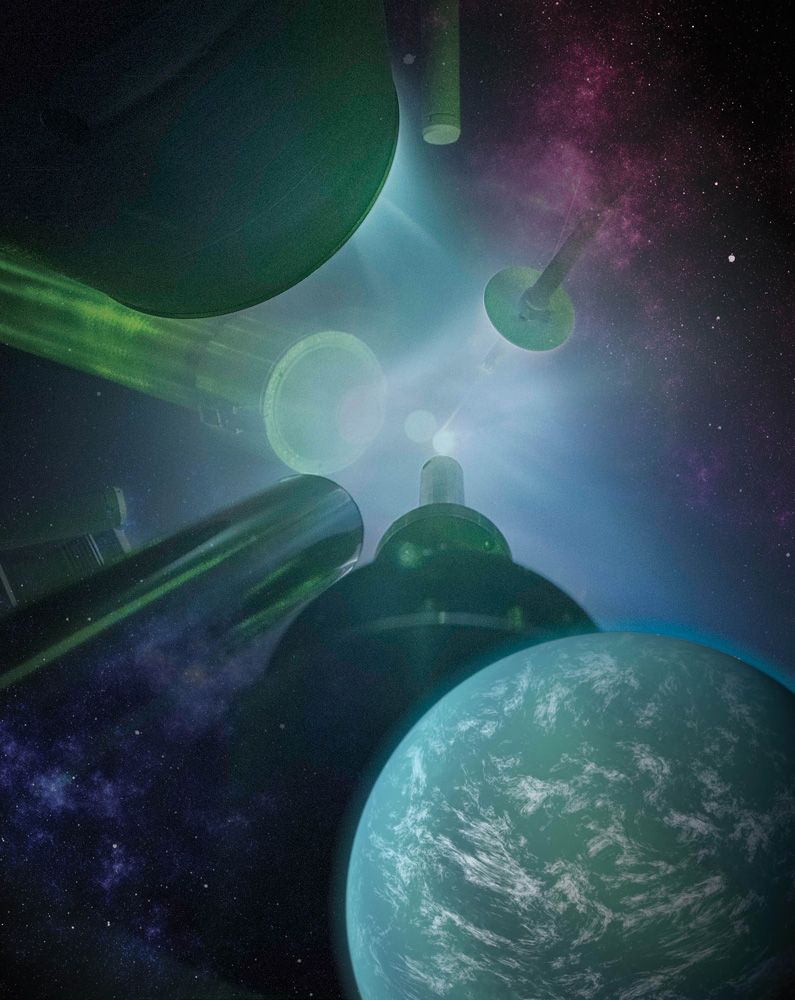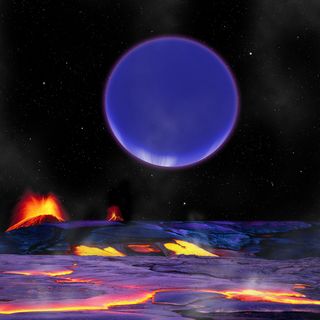Zap! Laser Blasts Shed Light on Cores of Alien Planets

Using laser blasts, scientists have recreated the extreme temperatures and pressures found inside large rocky planets known as super-Earths as well as in icy giant planets such as Neptune and Uranus, shedding light on what the interiors of these exotic worlds are like.
The new findings suggest that the interiors of super-Earth exoplanets may consist of oceans of molten rock that generate magnetic fields, and that giant planets may contain solid, rocky cores, researchers say.
In the past 20 years or so, astronomers have confirmed the existence of more than 1,800 planets orbiting distant stars. These discoveries have revealed very different kinds of planets from those seen in the solar system, such as super-Earths, which are rocky planets that are up to 10 times the mass of Earth. [The Strangest Alien Planets]
A great deal remains unknown about these newfound types of alien worlds, including details about how they form and evolve, and what kinds of conditions they might impose on life over time.
A major factor controlling the evolution of a planet is how its ingredients melt. These ingredients include silica, "the main constituent of rock," said lead study author Marius Millot, a physicist at Lawrence Livermore National Laboratory in Livermore, California.
Melting is arguably the most important process that determines how the interiors of planets evolve. For instance, melting determines whether or not the innards of a rocky planet such as Earth separate into a crust, mantle and core. In addition, the magnetic fields of planets result from the churning of electrically conductive fluids such as molten iron. Magnetic fields could help protect the atmospheres of planets from getting stripped away by winds of particles from their host stars, and therefore may prove vital to the evolution of life.
The extreme pressures found inside planets can greatly modify the melting temperatures and other properties of their constituent materials.
Sign up for the Live Science daily newsletter now
Get the world’s most fascinating discoveries delivered straight to your inbox.
"Pressure squeezes atoms together, modifying their properties in ways that can be quite hard to predict," Millot said.
The innards of super-Earths and giant planets experience much higher pressure than Earth's because they have more mass squeezing inward. However, it was uncertain what effects such conditions might have on the properties of the interiors of these planets, since it is very difficult to generate such extraordinarily high pressures on Earth.
Astronomers have confirmed more than 700 planets beyond our own solar system, and the discoveries keep rolling in. How much do you know about these exotic worlds?
Alien Planet Quiz: Are You an Exoplanet Expert?

Until now, the highest pressure at which scientists had melted silica was about 100 gigapascals, which is roughly 1 million times the atmospheric pressure of Earth at sea level.
Now scientists have discovered the melting temperature and other key properties of silica when the substance is exposed to a pressure of 500 gigapascals. This pressure is nearly twice that of the Earth's core, and is comparable to the pressure that exists at the boundary of the core and mantle in a super-Earth that is five times Earth's mass, researchers said. This is also the level of pressure generated by the giant impacts seen in the violent, final stages of planet formation. [Formation of Planets in a Protoplanetary Disk (Video)]
"By looking at matter at high pressures and temperatures, we provide insight to people trying to understand the structure and evolution of planets," Millot said. "We're not able to drill deep into planets, so to understand the interiors of planets, we recreate planetary interiors in the laboratory."
To learn more about how silica behaves at 500 gigapascals, the researchers started with crystals of a very dense form of silica known as stishovite, which is usually found only in minute amounts near meteor-impact craters. The team synthesized this stishovite using special high-pressure crystal growth techniques that involved temperatures of 2,780 degrees Fahrenheit (1,525 degrees Celsius) and pressures of 13.5 gigapascals.
The scientists then used powerful laser blasts to subject these crystals to extraordinarily high temperatures and pressures. Stishovite is up to twice as dense as normal silica, which means it can absorb more heat before melting.
The scientists discovered that at 500 gigapascals, the melting temperature of silica rises to about 14,480 degrees F (8,025 degrees C). (The melting point of normal silica on Earth's surface is around 3,000 degrees F, or 1,650 degrees C.)
"The melting temperature of silica is similar to that of iron at those pressures," Millot told Space.com. "This suggests that in large, rocky exoplanets, we have magma oceans of liquid silicates coexisting with liquid iron, which is not something that has been considered before when modeling those planets."
The investigators also found that high-pressure liquid stishovite was electrically conductive, which means it could generate magnetic fields. "This hadn't been widely considered — rocks such as silicates are generally considered electrically insulating, not conductive," Millot said.
In addition, these findings suggest that silica is solid inside icy giants such as Neptune and Uranus as well as in gas giants such as Jupiter and Saturn. "If rock in these cores is solid instead of liquid, it won't contribute to a magnetic field," Millot said. "Also, if it's solid, it likely will not mix as easily with surrounding materials as it would if it were liquid."
The researchers are now investigating how other planetary constituents such as hydrogen, helium, water and ammonia behave under very high temperatures and pressures.
"Of course, planets are not made purely of water or purely of silica, so the challenge in the next decade is to study how mixtures of materials behave at very high temperatures and pressures," Millot said.
The new study was published online today (Jan. 22) in the journal Science.
Follow us @Spacedotcom, Facebook or Google+. Originally published on Space.com.













